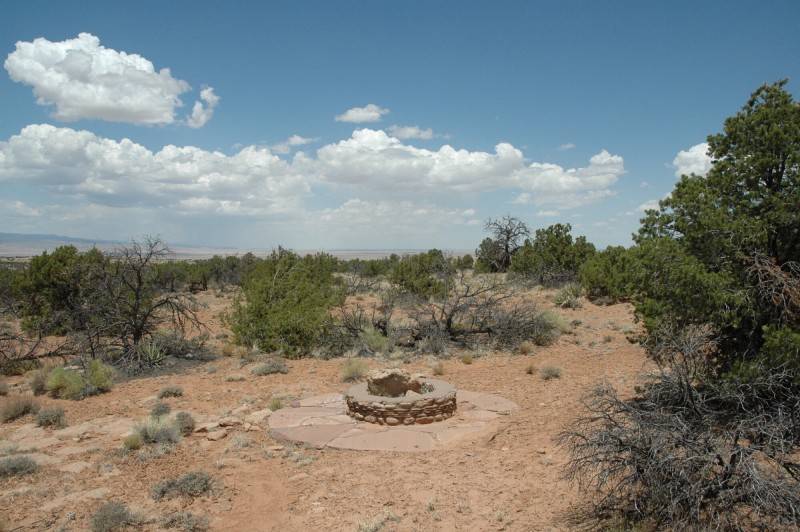Navajo Meridian Initial Point, Arizona

Four early Indian Reservations were surveyed by the federal government as part of the same Public Lands Survey initiative that covered the Territories and incipient states. The Navajo Meridian was established by the federal government in 1869, at the southeast corner of the newly established Navajo Indian Reservation, in order to conduct the survey of that land. Despite this having been completed, over the following decades, few patents were issued or rights acquired of any kind related to the survey, and the program was discontinued. The Navajo Nation territory also changed shape considerably after 1869, quadrupling in size in more than a dozen separate additions over 66 years. This survey point is one of 37 federal survey points of origin covering the USA (outside of the 13 original colonies), known as Initial Points, selected over the course of 150 years, to anchor newly acquired federal land to the legal and cartographic grid. The Navajo Meridian Initial Point was forgotten by federal surveyors, until C. Albert White, a surveying historian, calculated its possible location, and dispatched a crew to look for it in 1992. What they found was an unusual monument, apparently built by the now-defunct Navajo Nation’s Office of Land Investigations, though no records of its construction have been found. White figured it was made sometime between 1962 and 1965, based on the design of some Pepsi Cola bottles found buried in the sand adjacent to the monument. The monument encircles a stone that is believed to have been used as the marker for the original survey. The stone has the letters S E N R engraved on it (for South East Navajo Reservation), though there are no brass surveyor discs or other monuments at the site.